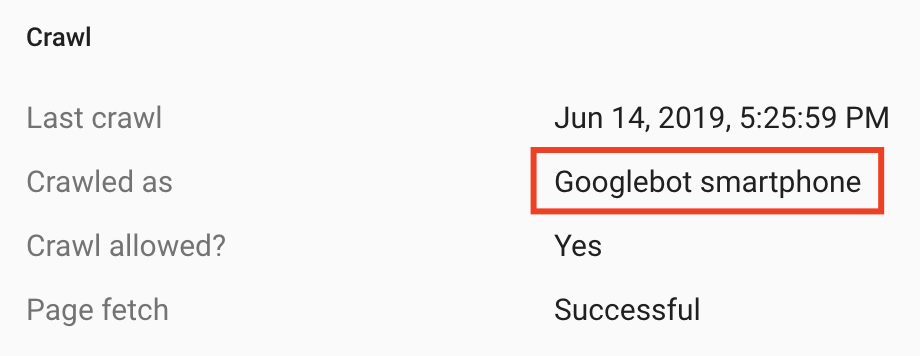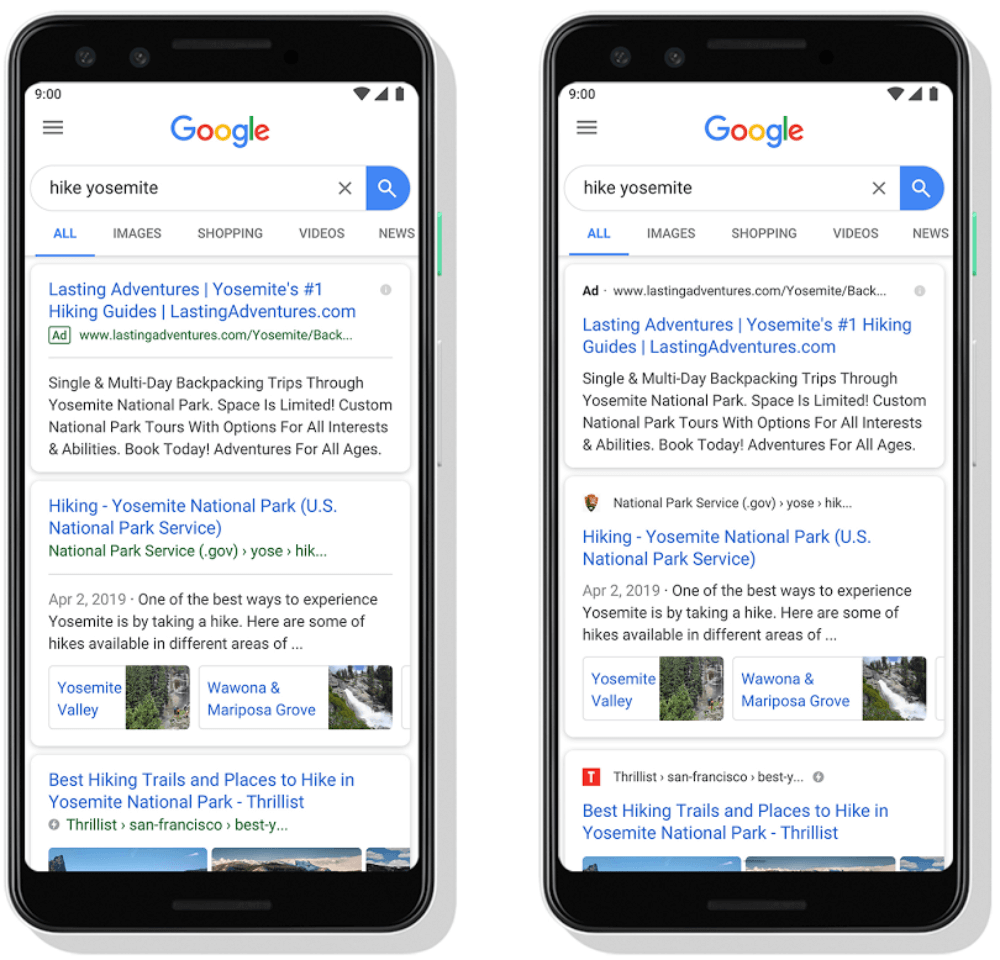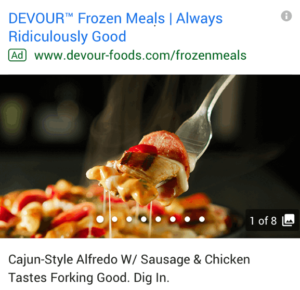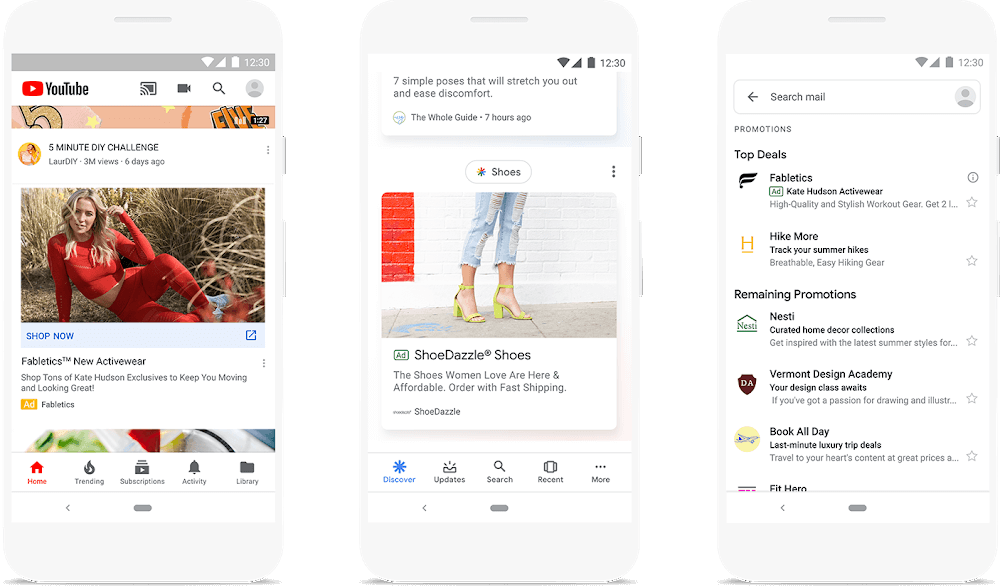Google has been busy making changes to both search and ads.
Some of these have been well received by the SEO and marketing communities, while others have been controversial.
Here are the 5 most important changes to Google search and ads so far in 2019.
1. Mobile-first indexing
Because most people searching the web these days use a mobile device, Google has been taking steps to enable mobile-first indexing of web pages since 2016.
Starting on July 1st in 2019, mobile-first indexing will be enabled by default for all new domains.
This means that Google’s robots will crawl and index the mobile versions of all new websites from that point onwards.
In other words, Google will now use the mobile versions of new websites when deciding where they should rank in the search results.
Google will continue to monitor whether older websites are ready for mobile-first indexing and will notify website owners via Google Search Console as soon as their sites have been determined to be ready.
You can check for mobile first indexing of your site by using the URL inspection tool in the search console.
If you see “Crawled as Googlebot smartphone” then that means your website likely has mobile-first indexing enabled.

Mobile-first indexing means that you need to make sure your website works great on mobile and delivers all the same content as the desktop version.
Here are some things to do, if you haven’t already:
- Your website should have all content accessible on all devices; text, photos, videos and links.
- All meta data such as titles, descriptions and meta tags should not differ on desktop and mobile.
- Use responsive web design instead of having a separate mobile URL for your website.
You can check if any pages on your site have mobile problems in the Mobile Usability report in the search console. You can also test individual URLs by entering them into Google’s Mobile-Friendly Test Tool.
Bottom Line: Google will start to crawl and index the mobile versions of all new websites starting on July 1st, 2019. It will now be more important than ever to make sure your site works well on all devices.
2. Icons in the mobile search results
Google recently introduced a new look for ads and organic listings in the search results on mobile.
Organic listings now include a favicon next to the site URL, placed above the page title and description.
Further, the site URL is now black and the green color has been removed altogether.
![]()
What does this mean for you?
Since search results now feature favicons, make sure that your website has a defined favicon.
If you have a logo but don’t have a favicon, then there are many free tools you can use to create one. A good example is favicon.io.
Setting a favicon is very simple to do on most website platforms. In WordPress, you can set the favicon in your admin dashboard under Appearance » Customize » Site Identity.
For more information, read Google’s guidelines on favicons in search.
Bottom Line: Google has introduced a new design for search results on mobile. The biggest change is that website favicons are now displayed in the search results.
3. Google search ads are less distinguishable
Google’s new design for search on mobile also affects search ads.
Paid ads are now recognized by a black “Ad” label with the URL in black, at the top of the listing.
This is a much more subtle look than the previous green ad label and makes the ads look more similar to organic listings.
The paid results blend in more and will likely get more clicks. Google probably did this to get more clicks on ads so that they get more revenue.
These changes are good for search engine marketers who use paid ads, but bad for websites that rely mostly on organic search traffic.
On desktop, ads are still delivered with the green icon and URL. But you can expect the new look to be rolled out there eventually.
Below you can see the old design on the left and the new one on the right:

Image Source: Google
Bottom Line: Google has replaced the green ad label with a black label in the search results on mobile. This will likely drive more clicks on paid ads and reduce clicks on the organic search results.
4. Gallery ads
Google search ads have been in a text-only format since AdWords was first introduced back in 2000.
That is about to change later this year when gallery ads launch.
What are gallery ads?
Gallery ads are search ads that feature a gallery of images. Users can swipe through to see more images or press down to expand. At the end of the gallery, there is a call to action to visit the advertiser’s website.

Image source: Search Engine Land
The ads will feature 4-8 images with up to 70-character descriptions and up to three headlines. These ads will only display in the top spot of a search results page and only on mobile for now.
Why you should care about gallery ads
This ad format will allow businesses to showcase their product or brand and could be very useful to tell a story or to highlight product features or services.
For example, if you think about the features of a car or a selection of spa treatments, which do you think will work better; text or images?
Images drive user engagement and Google found that ad groups with one or more gallery ads had up to 25% more user interactions compared to text ads.
Bottom Line: Gallery ads bring images to search ads for the first time. The ads will be displayed in the top position of the mobile search results and feature a slideshow of images.
5. Ads in the Discovery feed
Ads are coming to the Google Discovery feed.
Introduced in 2016, the Discovery feed is a news and information feed available on the Google search apps on iOS and Android, as well as Google’s home page on mobile browsers.
The Discovery feed is the latest iteration of the Google feed that received significant updates and a visual overhaul last year – now promoting more evergreen content, articles, and videos.
Google has reported that the feed has seen significant growth and that over 800 million people use it each month.
Discovery ads
Discovery ads will launch later this year. This is a new campaign format that will enable advertisers to reach potential customers in the Discovery feed, YouTube feed, and Gmail.
Campaigns in this new format will be based around audiences: in-market, affinity and custom intent.
Advertisers can select from these audiences to reach possible customers and to create brand awareness with people who are interested in certain product categories.

Image Source: Google
The ads themselves will contain a high-quality image, headline, description and a call-to-action.
Google said they developed the new ad format because:
- 76% of consumers enjoy making unexpected discoveries when shopping.
- 85% of consumers will make a product-related action in the first 24 hours after first discovering a new product. These include price comparisons, reading reviews or even buying.
Why you should care about Discovery ads
You can think of discovery ads as being designed to grab the customer’s attention not only when they are looking for something specific, but also when catching up on news or articles or email.
In a way, this is very similar to social media ads, like the ones you find on Facebook and Instagram.
Bottom Line: Discovery ads will show in Google’s Discovery feed, the YouTube feed and Gmail. They are image-based ads that are designed to grab the attention of potential customers when they are browsing.
Take-home message
Google’s recently reported changes are great for Google and its shareholders since the changes are very likely to increase Google’s paid clicks and therefore its revenues.
They are also going to be good for marketers who use paid ads to drive traffic since Google will now offer more advertisement options with higher click-through rates.
But the changes are not so great for people who rely on organic search traffic, because the increase in paid clicks is likely to lead to a small reduction in organic clicks.